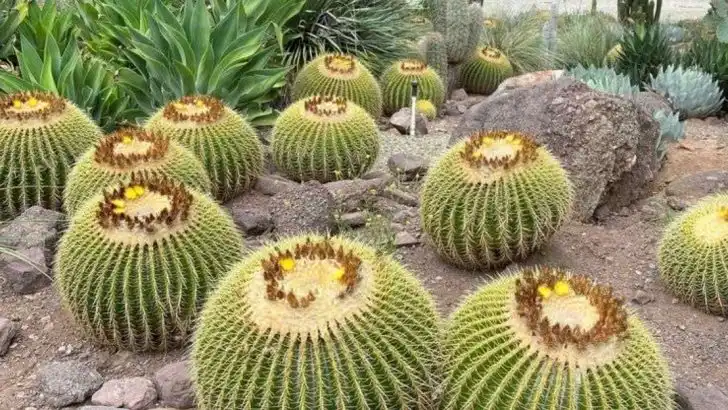The Southwest desert isn’t just about sand and sun—it’s also home to some of the most vibrant, eye-catching plants you’ll ever see. Thanks to their incredible ability to thrive in harsh conditions, cacti and succulents bring bold textures, fascinating shapes, and stunning colors to desert gardens without demanding much care. If you’re looking to add life and artistry to a dry landscape, these plants are where it’s at.
In this list, we’ll introduce you to 16 colorful cacti and succulents that turn any desert garden into a masterpiece. Whether you’re drawn to vivid reds, sunny yellows, or cool purples, there’s a plant here ready to steal the show—and survive whatever the desert throws its way.
Golden Barrel Cactus
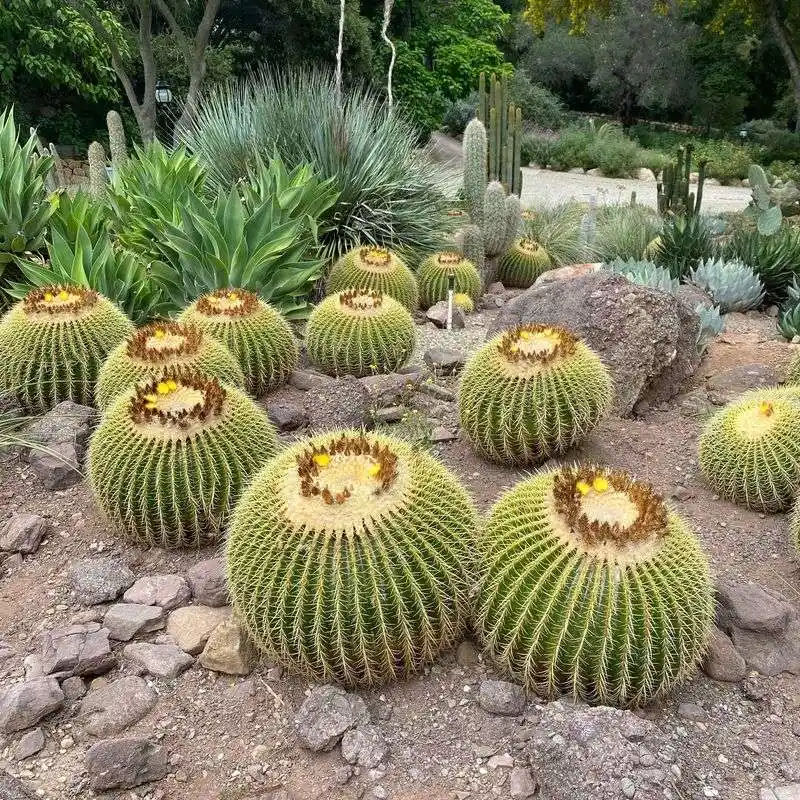
The golden barrel cactus, a spherical marvel with its radiant yellow spines, makes a striking visual statement. Its rounded form glows under the desert sun, offering a unique focal point. Known for its slow growth, this cactus can live for decades, providing enduring beauty. Its ability to withstand harsh conditions embodies resilience. Ideal for xeriscaping, this cactus requires minimal water, making it a sustainable choice. Whether planted alone or in clusters, it adds texture and color. Its beauty lies in simplicity, drawing admiration from gardeners and passersby alike.
Prickly Pear Cactus
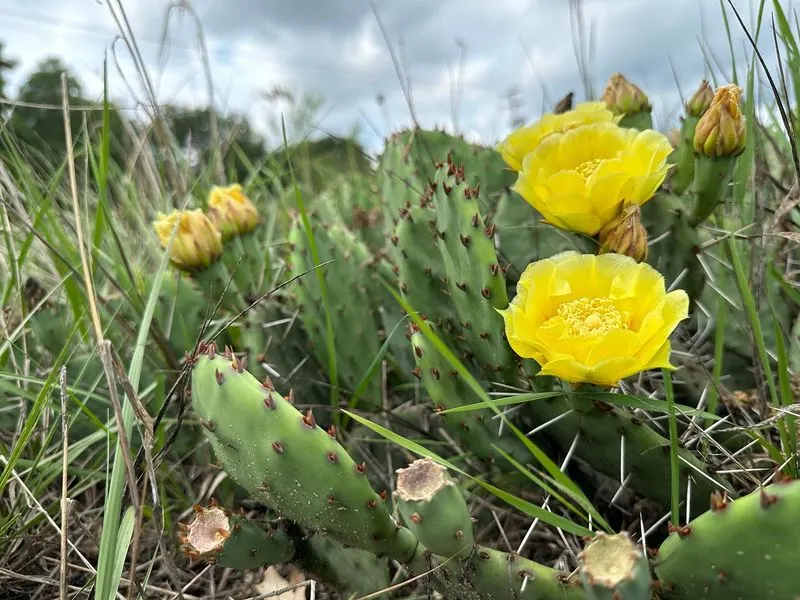
Prickly pear cactus, known for its paddle-shaped pads, adds a dash of color with its vibrant flowers. These blooms vary from yellow to pink, providing a seasonal spectacle. Beyond aesthetics, its pads and fruits are edible, offering culinary possibilities. Thriving in dry conditions, it exemplifies adaptability. The cactus’s unique silhouette creates interest and structure in gardens. With minimal care needs, it’s perfect for those seeking low-maintenance plants. Its fruit, known as “tuna,” is not only a visual delight but a tasty treat. This cactus is a versatile garden addition.
Blue Chalksticks
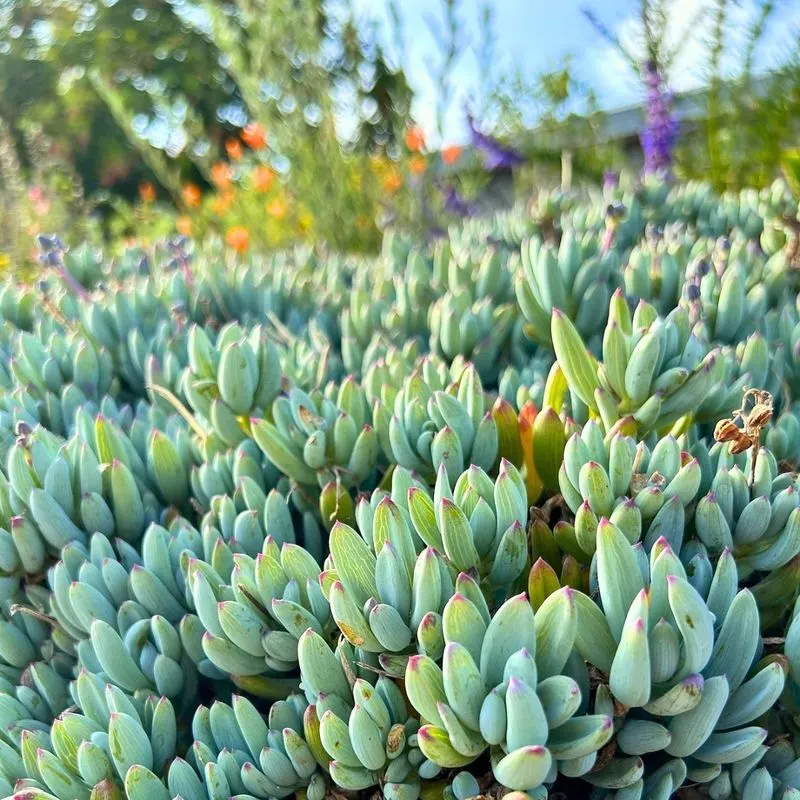
Blue chalksticks offer a cool contrast to the warm tones of desert gardens with their bluish-grey hue. These succulent plants are admired for their upright, stick-like appearance that resembles a collection of chalk. Their unique color and form make them a popular choice for gardeners looking to introduce texture and contrast. Drought-hardy, they thrive with little water, making them an eco-friendly option. When planted en masse, they create a striking ground cover. Their resilience and beauty make them a favorite for both novice and experienced gardeners.
Fairy Duster
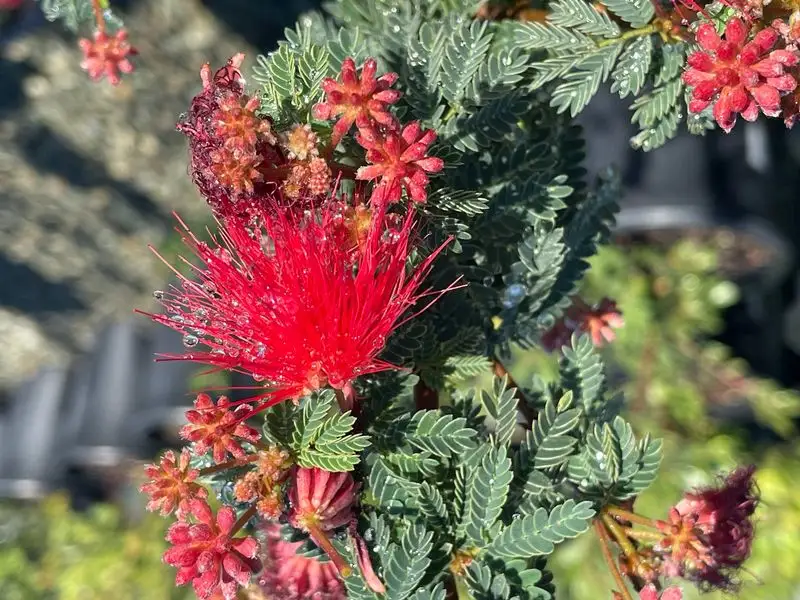
With its delicate, feathery blooms, the fairy duster brings a whimsical touch to any desert garden. Its pink flowers resemble tiny feather dusters, inviting butterflies and hummingbirds. This plant thrives in dry, sandy soils, making it an excellent choice for low-water landscapes. Despite its delicate appearance, fairy duster is hardy, offering both beauty and resilience. It’s ideal for adding a splash of color and attracting wildlife. As a native of the Southwest, it blends seamlessly with natural landscapes, offering a touch of elegance and charm.
Red Yucca
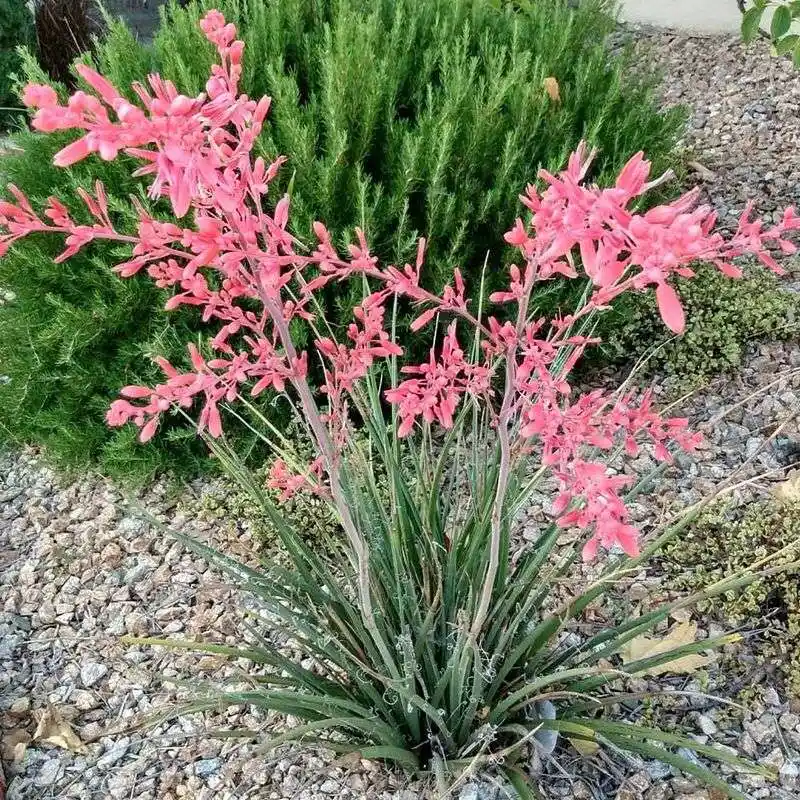
Red yucca stands out with its slender, arching red flower spikes that rise above its rosette of green leaves. These coral-red flowers attract hummingbirds and butterflies, creating a lively garden scene. Its evergreen foliage provides year-round interest and structure. Drought-tolerant and low-maintenance, red yucca is perfect for xeriscaping. Its elegant form adds height and color to garden arrangements. Whether used as a focal point or in mass plantings, it offers visual dynamism and ecological benefits. Red yucca’s captivating presence is hard to overlook.
Agave Victoriae-Reginae
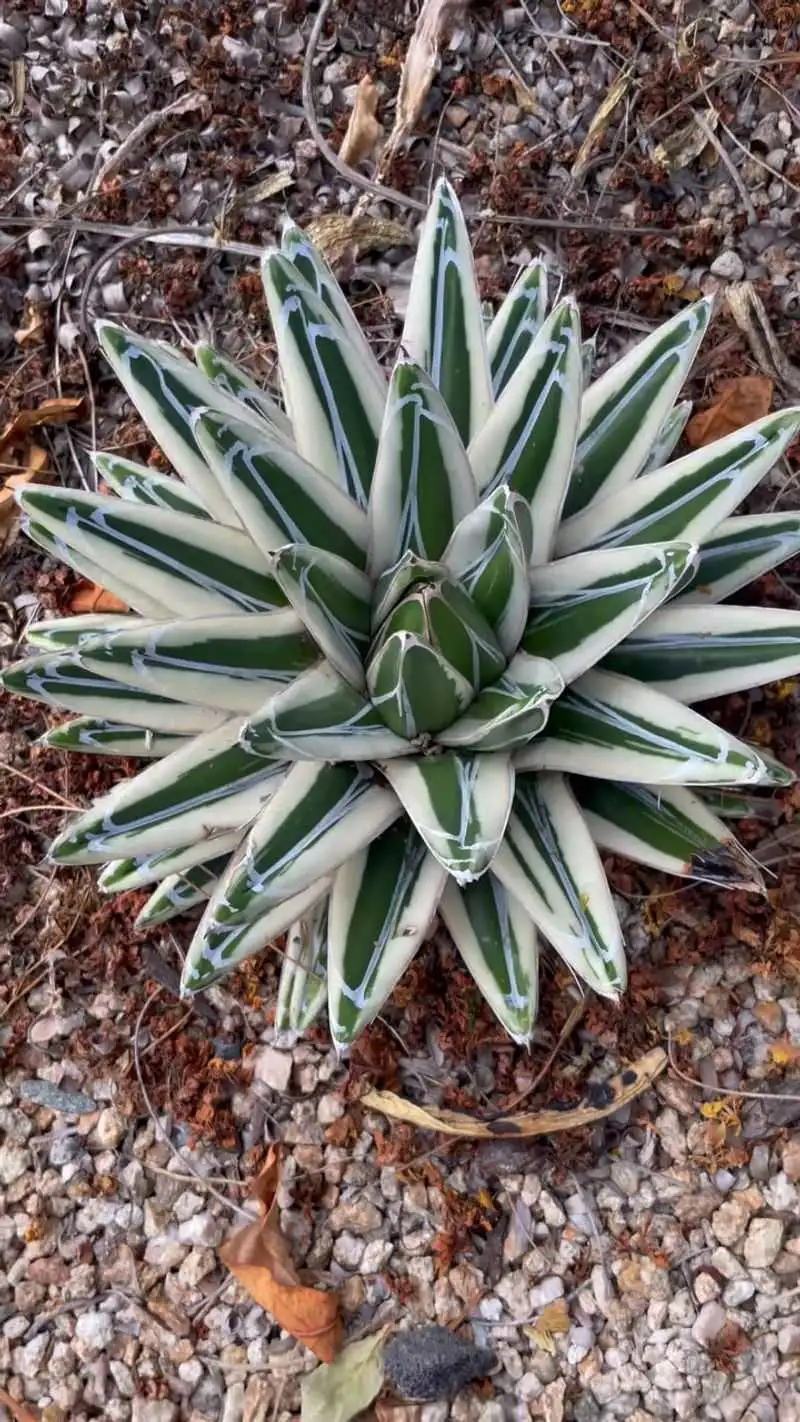
This regal agave showcases striking dark green leaves edged with intricate white patterns. Its compact rosette form adds elegance to any setting. Known for its architectural beauty, it serves as a focal point in gardens. Low water requirements make it an ideal choice for sustainable landscapes. Slow-growing and long-lived, this agave embodies timeless beauty. Its symmetrical form and contrasting colors draw admiration. Perfect for containers or rock gardens, it adapts well to various settings. The Agave Victoriae-Reginae is a testament to nature’s artistry.
Desert Marigold
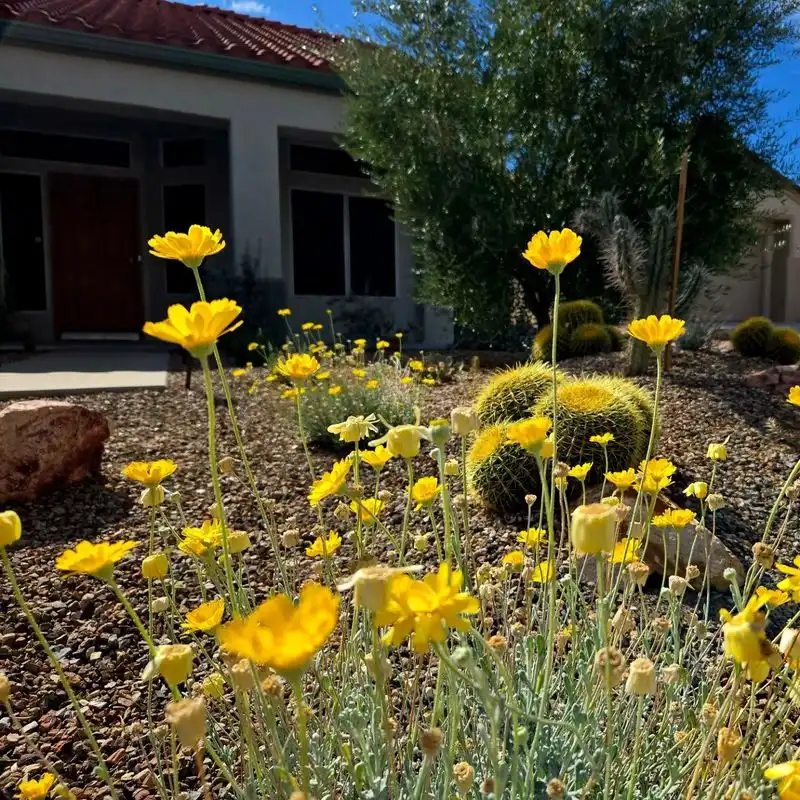
Desert marigold, with its cheerful yellow blooms, brightens up any arid landscape. These flowers thrive in poor soils, demonstrating nature’s adaptability. Their long blooming season provides ongoing color and joy. Attracting pollinators, they support local ecosystems while beautifying gardens. Tolerant of drought and neglect, desert marigold is a reliable choice for low-maintenance gardening. It complements other desert plants, adding vibrancy and contrast. Whether planted along pathways or in garden beds, its sunny disposition is contagious, transforming barren landscapes into lively spaces.
Mexican Feather Grass
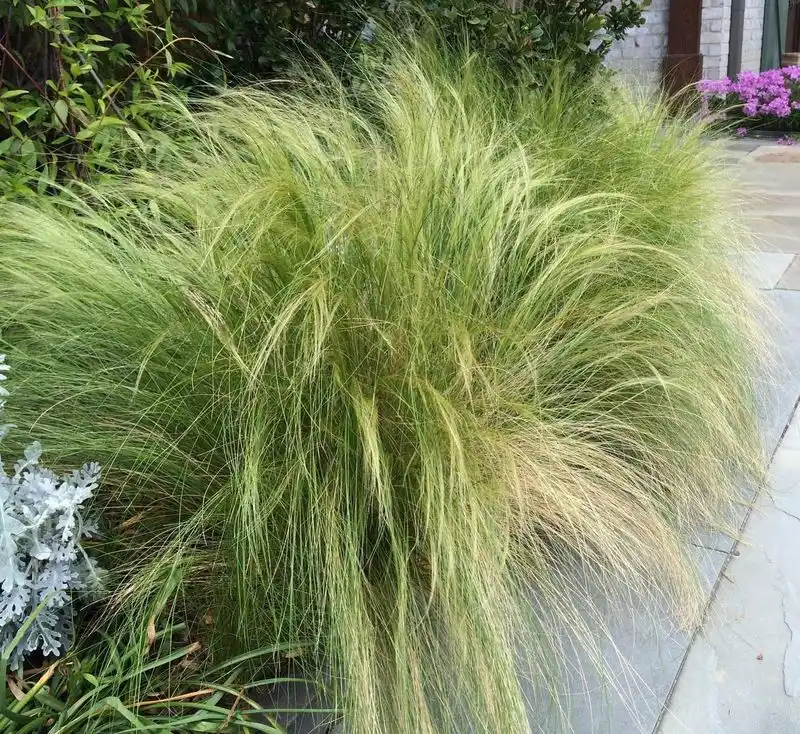
This ornamental grass enchants with its delicate, feather-like blades that sway gracefully in the wind. Its fine texture adds movement and softness to desert landscapes. Mexican feather grass is drought-tolerant and adapts well to poor soils, making it a practical choice for sustainable gardens. It pairs beautifully with cacti and succulents, adding contrast to their bold forms. Its golden hues in fall provide seasonal interest. As it dances in the breeze, it brings a sense of serenity and elegance to any garden. A versatile addition with a gentle presence.
Beavertail Cactus
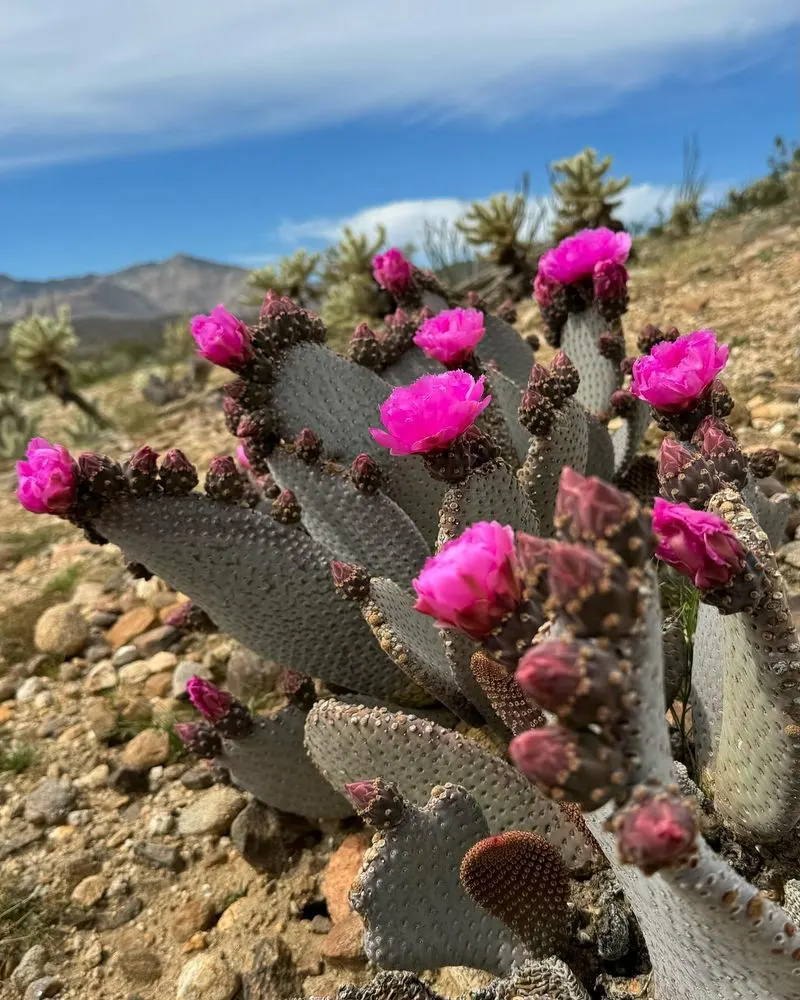
Beavertail cactus, with its flattened pads and vivid magenta flowers, captures attention instantly. The dainty, paddle-like pads offer a unique texture, while its seasonal blooms provide a burst of color. Ideal for rock gardens and containers, this cactus is both decorative and hardy. Low water needs make it perfect for xeriscaping. Its striking appearance is a magnet for photographers and nature lovers. The beavertail cactus is also a great choice for introducing color and form to garden borders or patio displays, enhancing visual interest.
Ocotillo
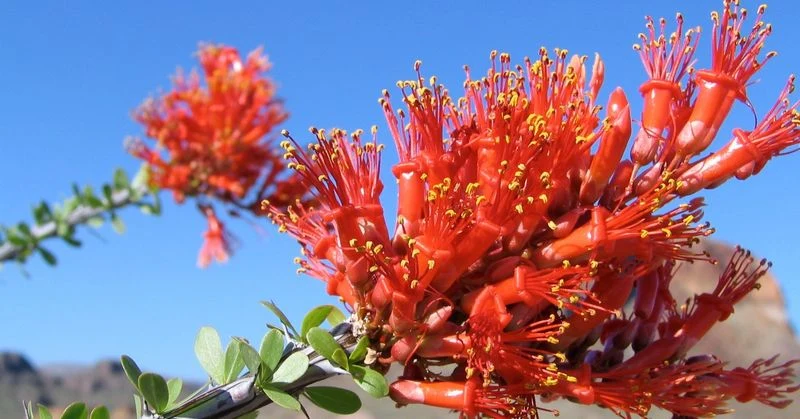
Ocotillo’s tall, spiky stems and vibrant orange-red flowers make it a standout in the desert. Its stems can grow up to 20 feet, creating dramatic vertical interest. The flowers attract hummingbirds, ensuring lively garden interactions. In dry periods, its stems appear barren, but rain brings them to life with green leaves. Ocotillo thrives in well-draining soil, requiring minimal care. It’s perfect for adding height and color to desert landscapes. The ocotillo’s transformation with rain showcases nature’s resilience and adaptability, offering both beauty and intrigue.
Jade Plant
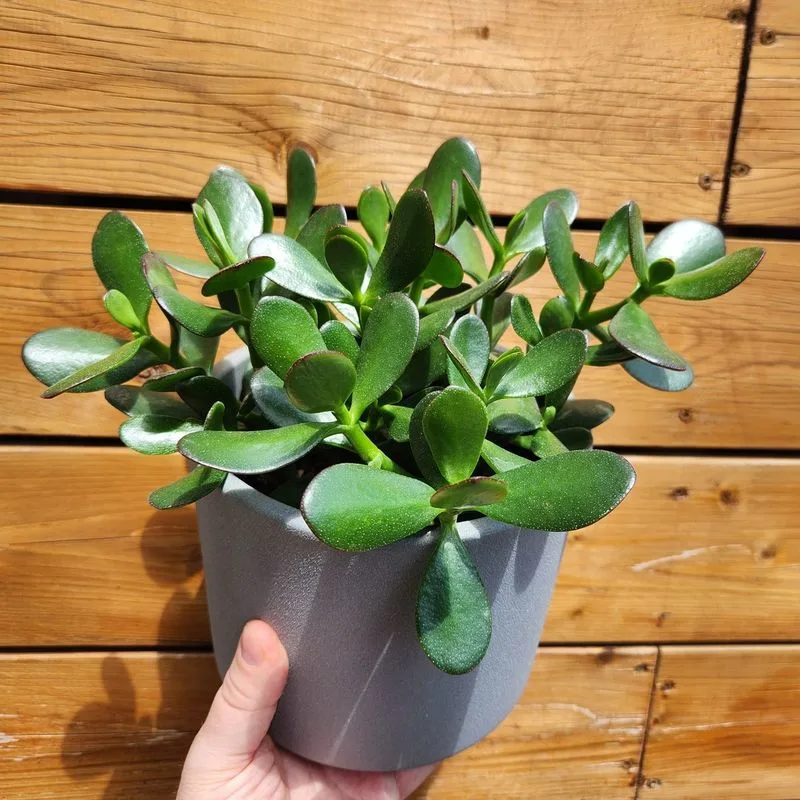
The jade plant, with its thick, fleshy leaves, is a symbol of prosperity and good fortune. Its rich green foliage offers a lush contrast to the arid desert environment. Suitable for indoor and outdoor settings, it’s a versatile addition to any garden. This succulent is renowned for its ease of care, thriving with minimal attention. Its ability to store water makes it perfect for dry climates. Placed in a decorative pot or within the garden landscape, jade plants add a touch of greenery and elegance wherever they grow.
Echeveria
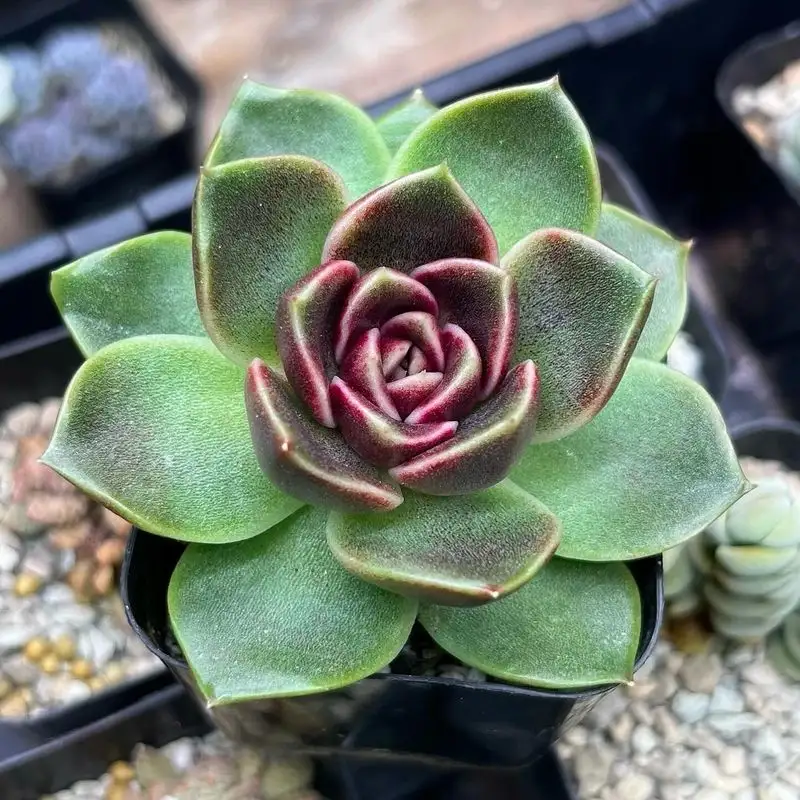
Echeveria, known for its elegant rosette form, adds a touch of glamour to desert gardens. These succulents come in a range of colors, from soft pastels to deep reds, creating visual interest. Their compact size makes them ideal for container planting or as ground cover. Echeverias are drought-resistant and require little maintenance, making them perfect for busy gardeners. Their delicate appearance belies their toughness, thriving in well-draining soils. As they cluster together, they form intricate patterns, adding beauty and texture to any garden setting.
Aloe Vera
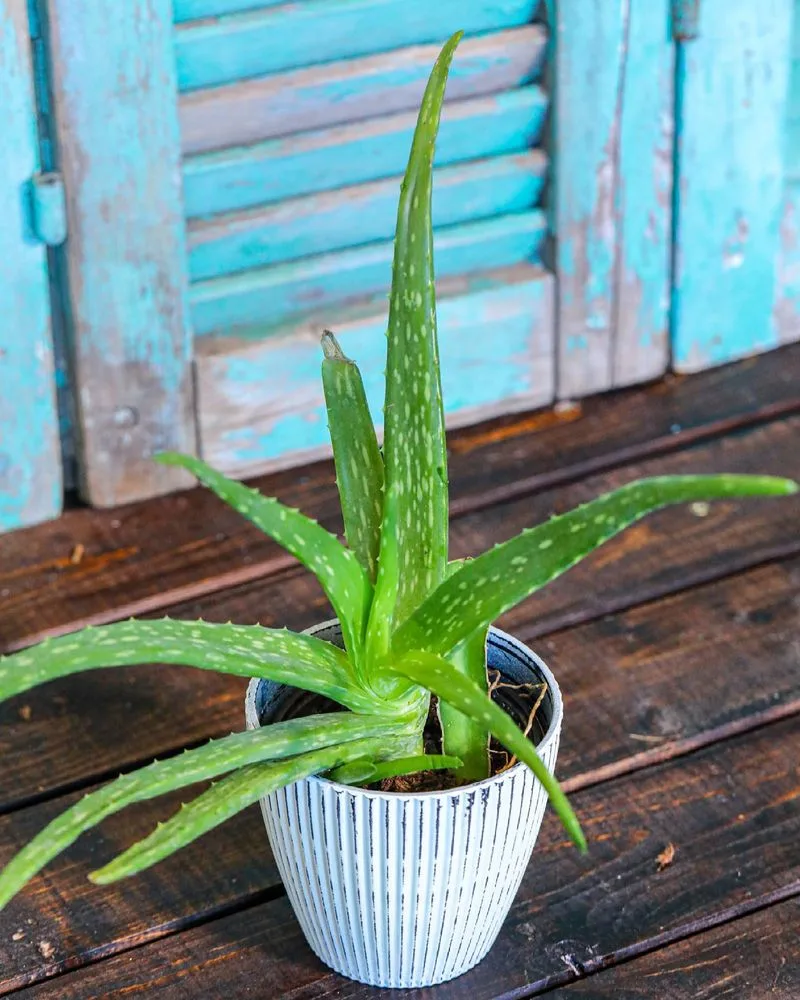
Valued for its medicinal properties, aloe vera is more than just a pretty face in the garden. Its fleshy, spiked leaves contain a soothing gel used for skin ailments. The plant’s architectural form adds structure to landscapes, while its low water needs make it a sustainable choice. Aloe vera thrives in sunny locations, providing a green accent amidst the desert backdrop. Its healing properties and striking appearance make it a dual-purpose plant. Whether used in rock gardens or as a potted plant, aloe vera’s allure is undeniable.
Crown of Thorns
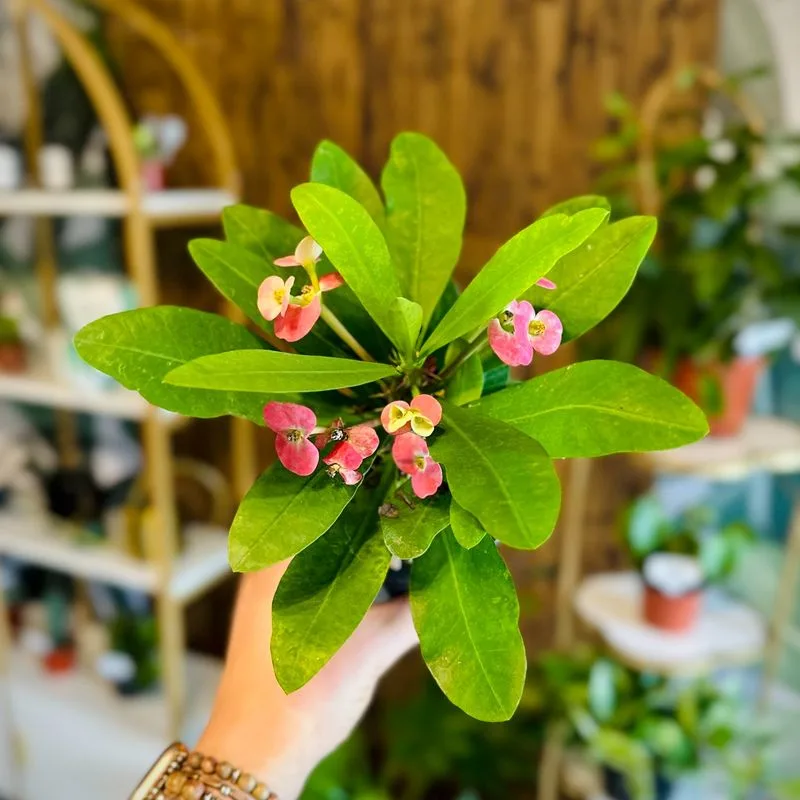
The crown of thorns is famous for its vibrant blooms and hardy nature. Bright red flowers contrast strikingly with its thorn-covered branches, offering a bold visual statement. This plant thrives in sunny, dry conditions, making it ideal for desert gardens. Its resilience and minimal care requirements appeal to both novice and experienced gardeners. Known for its biblical associations, it’s a plant that combines history with beauty. The crown of thorns adds both color and texture to garden compositions, becoming a conversation starter in any landscape.
Parry’s Agave
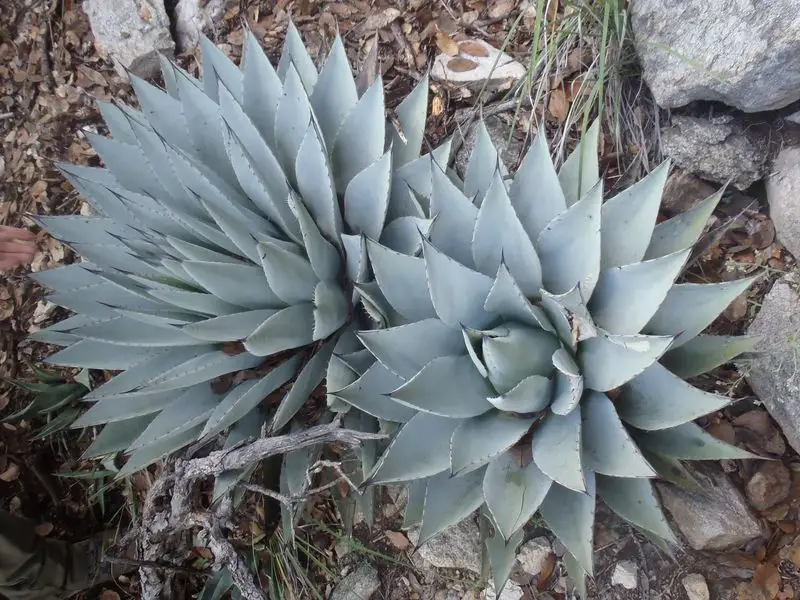
Parry’s agave captivates with its striking blue-green leaves arranged in a rosette. Its thick, spiky foliage provides architectural interest and bold texture to gardens. Known for its hardiness, it withstands extreme desert conditions. Parry’s agave is slow-growing, requiring little maintenance, making it perfect for xeriscaping. Its symmetrical form is both elegant and rugged, a testament to nature’s design. Ideal for rock gardens and desert landscapes, it offers year-round interest and dramatic flair. The plant’s ability to thrive in harsh conditions reflects its resilience and adaptability.
Ghost Plant
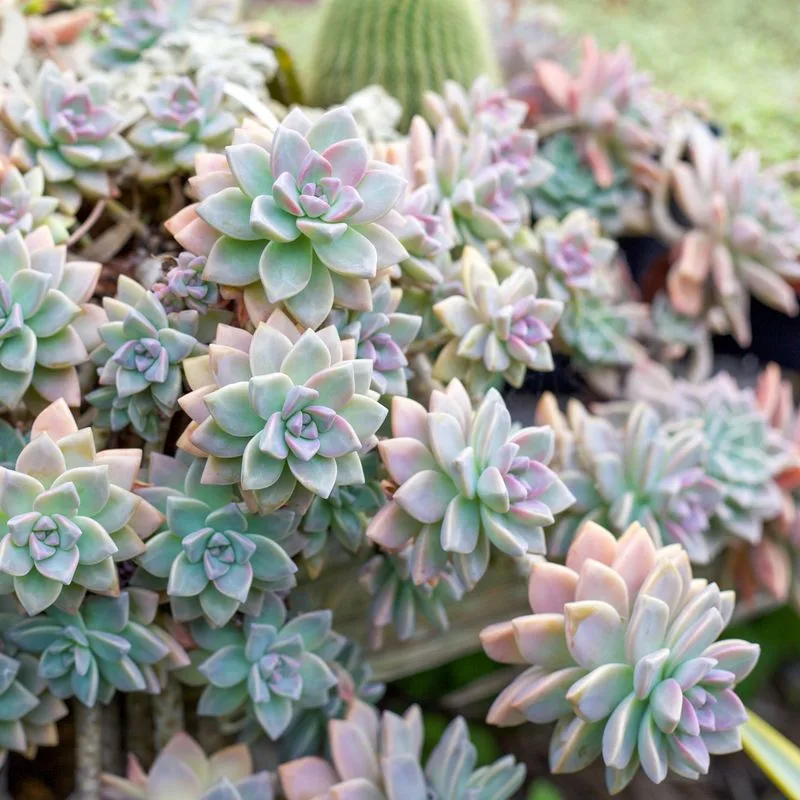
Ghost plant, or Graptopetalum paraguayense, enchants with its pale, silvery leaves that seem to glow in moonlight. The rosette formation of its leaves adds a mystical touch to gardens. This succulent is drought-resistant, thriving in well-draining soils with minimal care. Its subtle color changes with light exposure, adding dynamic interest. Ghost plants are perfect for rock gardens or as quirky, sculptural elements in containers. Their ethereal appearance and easygoing nature make them popular among succulent enthusiasts. A captivating choice for adding a spectral touch to gardens.

